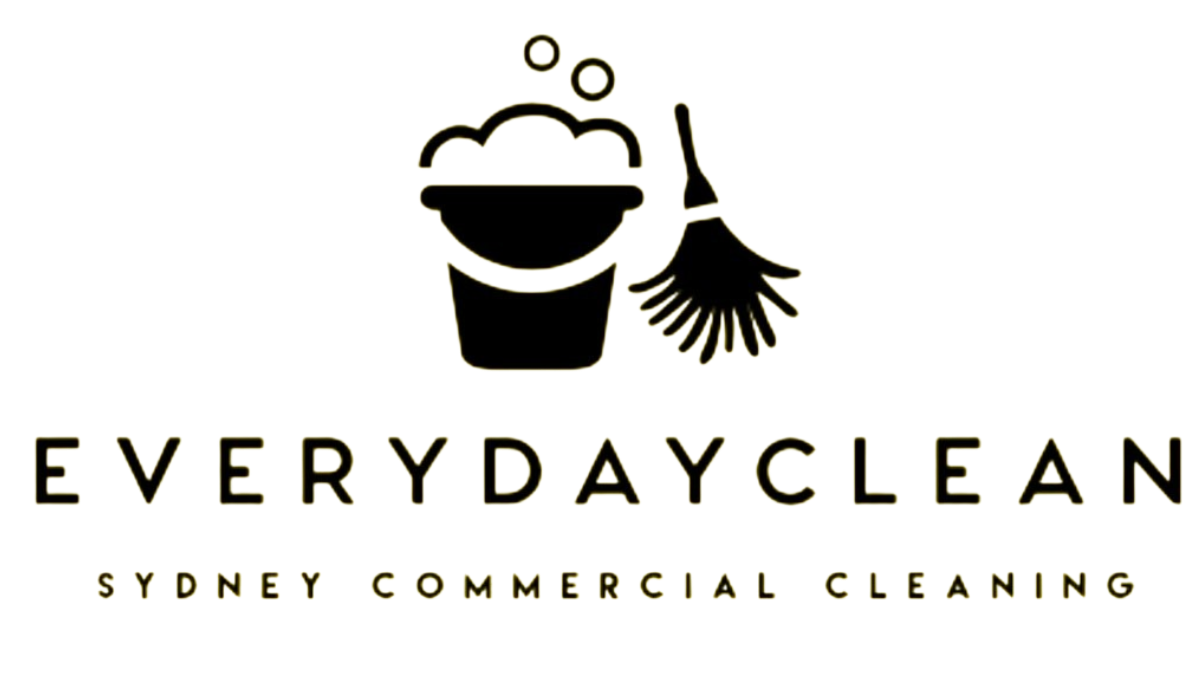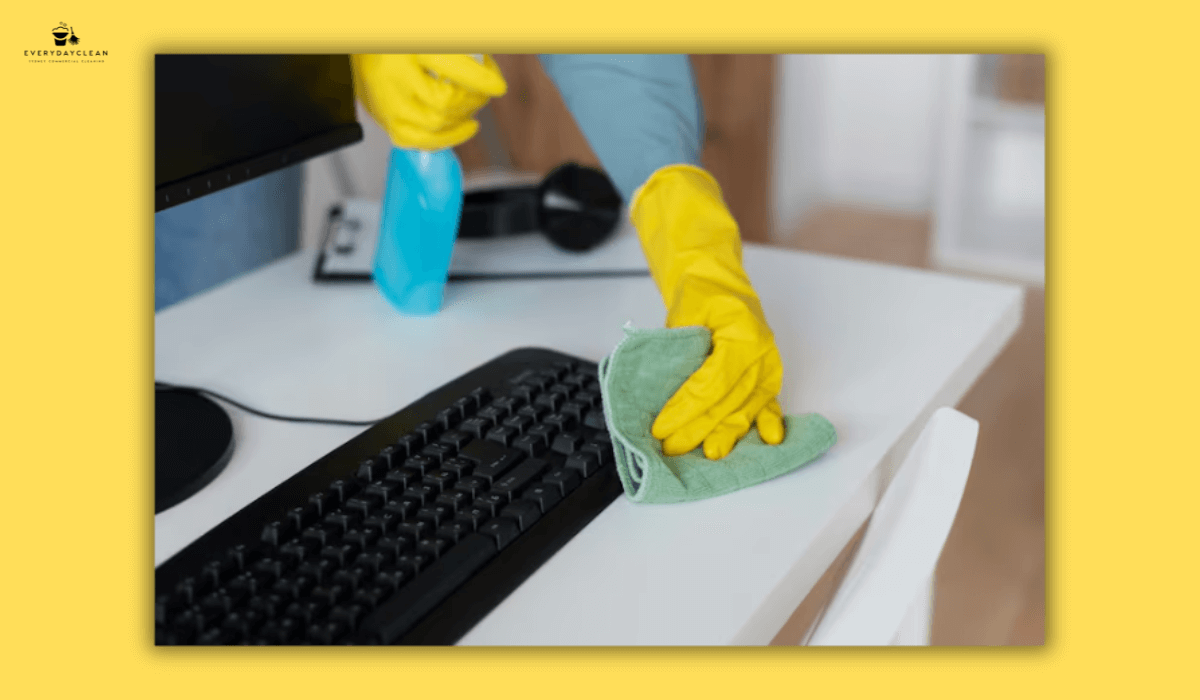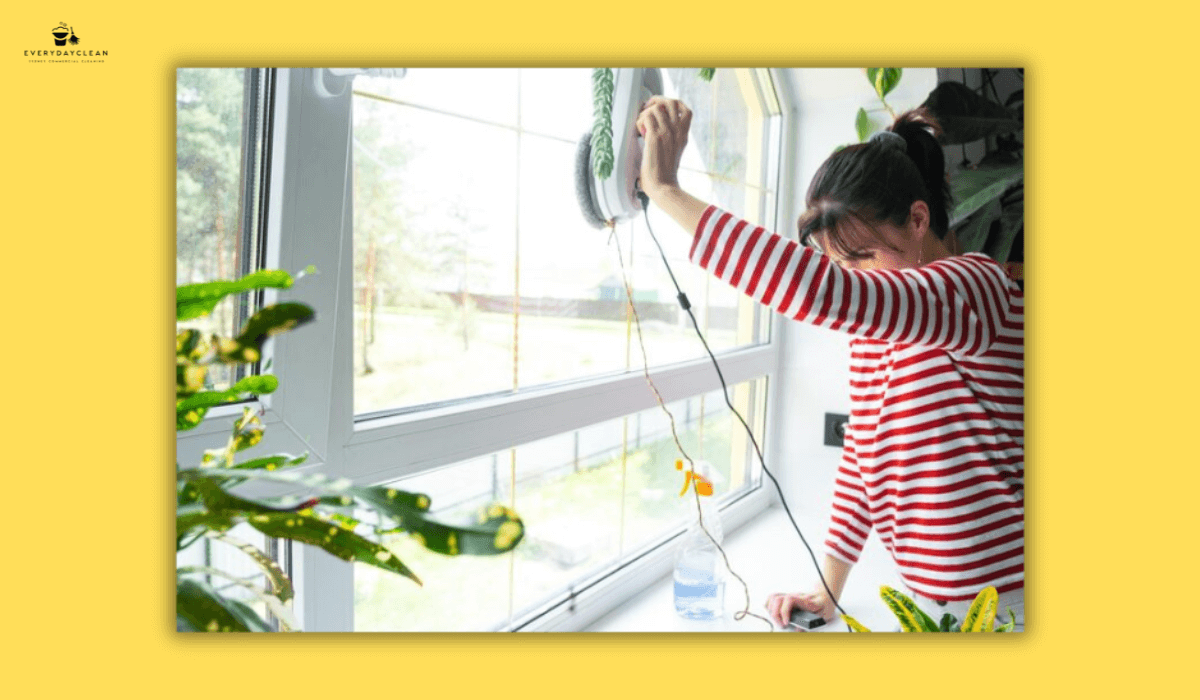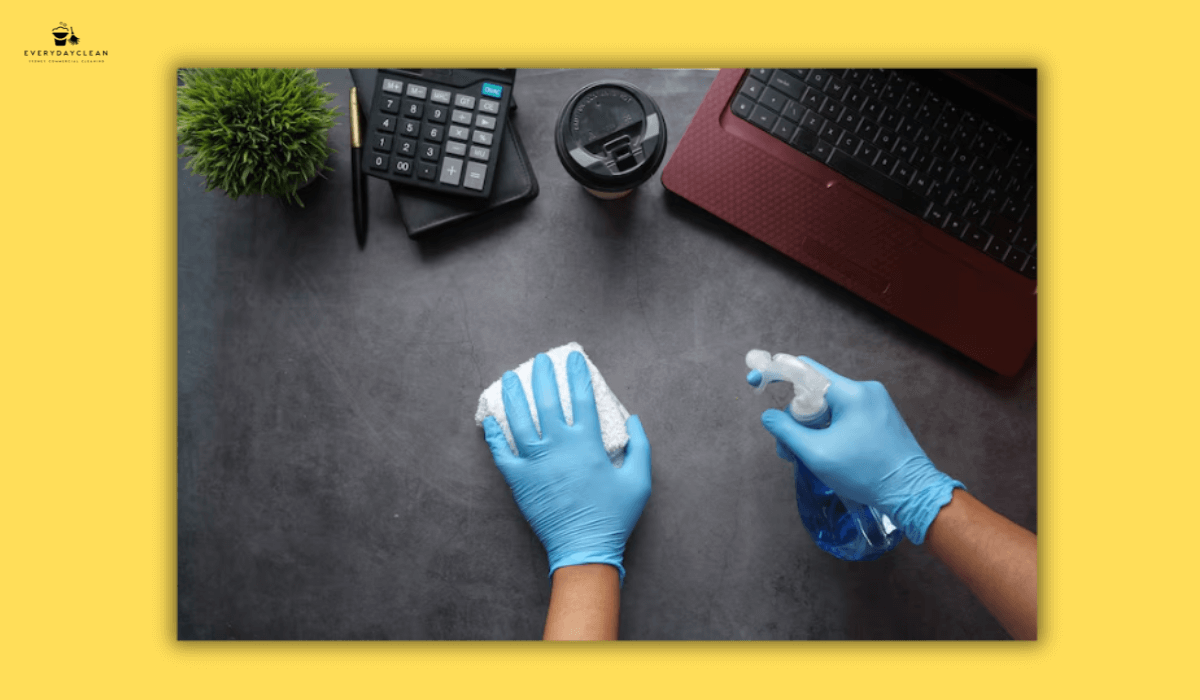Office Clutter Reduction Cleaning Tips: 10-Step Checklist
To reduce office clutter through cleaning, follow this 10-step checklist: sort visible mess, clean surfaces, remove unused items, declutter desks, tidy cables, empty bins, label storage zones, clean entryways, refresh shared areas, and schedule deep cleans. This method is tailored for professional offices where clutter buildup can impact productivity, safety, and visual order—not just workspace aesthetics.
Unlike broad organisation theories or minimalist hacks, these tips focus strictly on physical cleaning tasks to remove visible clutter, using practical tools and routines fit for any commercial workspace. They can also complement eco-friendly fall cleaning routines that double as clutter resets when transitioning between seasons.
10 Cleaning-Based Steps to Reduce Office Clutter
Each of the following steps is focused on actionable cleaning techniques—not mindset shifts or productivity advice—so your team can maintain a clutter-free office using sustainable, task-based systems.
Step 1: Sort and Remove Visible Surface Clutter
Start by clearing all surfaces, including desks, reception counters, and meeting tables. Use labelled baskets or bins to temporarily group items into “Keep,” “Discard,” and “Relocate” piles. This creates visual space instantly and lays the groundwork for targeted cleaning.
Step 2: Wipe Down Work Surfaces After Sorting
Once surfaces are cleared, wipe them with a suitable surface cleaner. Use microfiber cloths for desks, and non-abrasive sprays for electronic equipment. Clean desktops, monitor stands, and shared tables to remove dust and sticky residue that builds up around clutter.
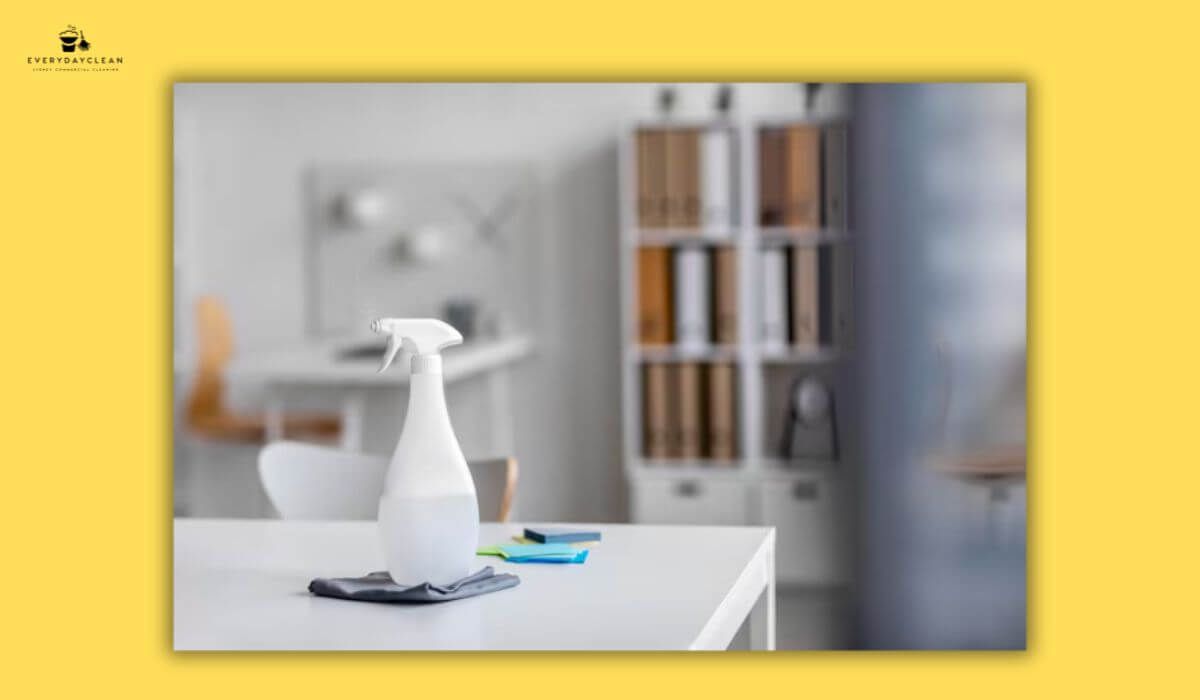
Step 3: Remove Unused Stationery and Broken Equipment
Go through drawers and storage cabinets. Dispose of pens that don’t work, expired business cards, empty folders, and broken office gadgets. These often contribute silently to clutter and rarely get cleaned during regular tidying.
Step 4: Clean and Declutter Workstations
Focus on individual desks. Use drawer organisers, vertical file holders, and under-desk bins to keep each area clean and free from overflow. Encourage employees to clean their desks weekly and limit personal item buildup to 1–2 functional items.
Step 5: Tidy Up Cables and Power Boards
Cords and adapters often tangle under desks or behind printers. Use cable trays, clips, and labelled ties to group wires neatly. Wipe dust off power boards and vacuum the floor beneath, especially in meeting rooms or shared hot desk areas.
Step 6: Empty Rubbish and Recycling Bins Thoroughly
Clutter often stems from overflowing or forgotten bins. Empty rubbish and paper recycling bins daily, and deep clean the interior weekly with disinfectant to prevent odour and residue buildup.
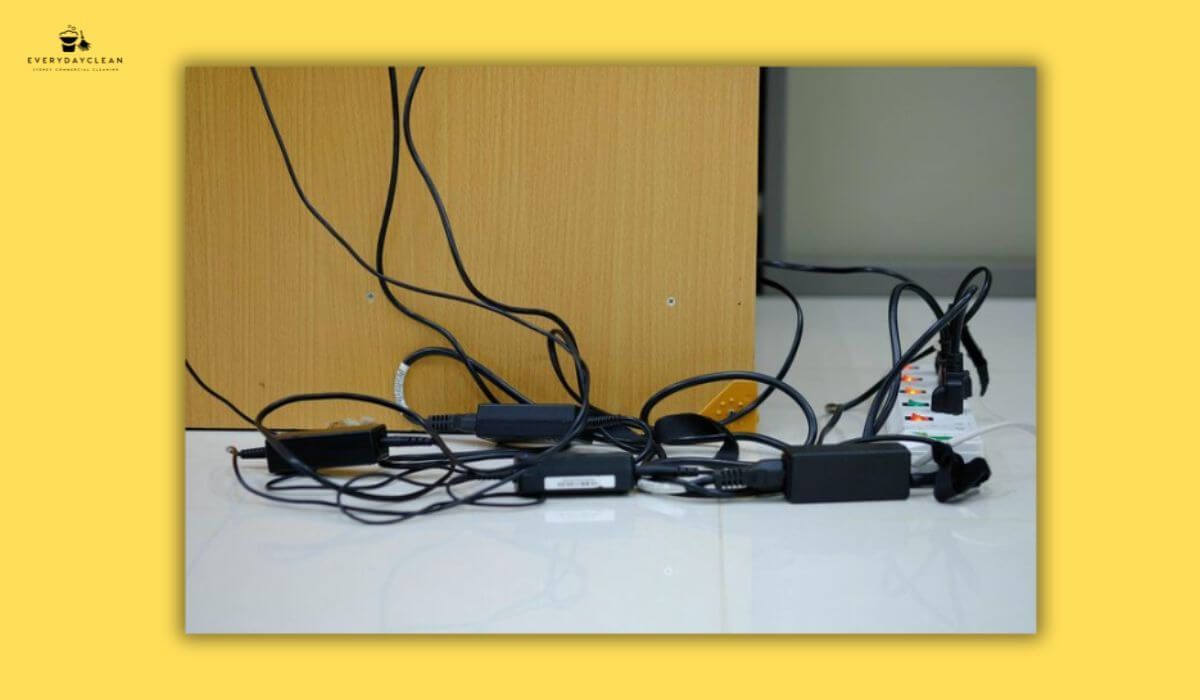
Step 7: Label Storage Zones for Cleaning Efficiency
Create clearly labelled areas for office supplies, shared equipment, and files. Use signs or decals to prevent items from drifting into the wrong locations. This improves team compliance and reduces cleaning confusion during weekly resets.
Step 8: Clean Entryways and Drop Zones
Entry mats, delivery counters, and coat racks tend to accumulate boxes, paper, and miscellaneous items. Clear these areas daily and vacuum any dust trails or debris tracked in by shoes or packages.
Step 9: Refresh Shared Spaces Like Kitchens and Print Rooms
Cupboards in kitchenettes or copy rooms are often overfilled with outdated supplies. Clean inside cabinets, discard expired items, and use bins to categorise printer cartridges, labels, and coffee items. Wipe down all surfaces, including appliance tops.
Step 10: Schedule a Weekly Clutter-Reduction Clean
Integrate a clutter-focused cleaning slot into the office schedule. Whether it's a team-wide 15-minute reset every Friday or a commercial cleaning contractor doing a focused session, routine is what sustains cleanliness long term.
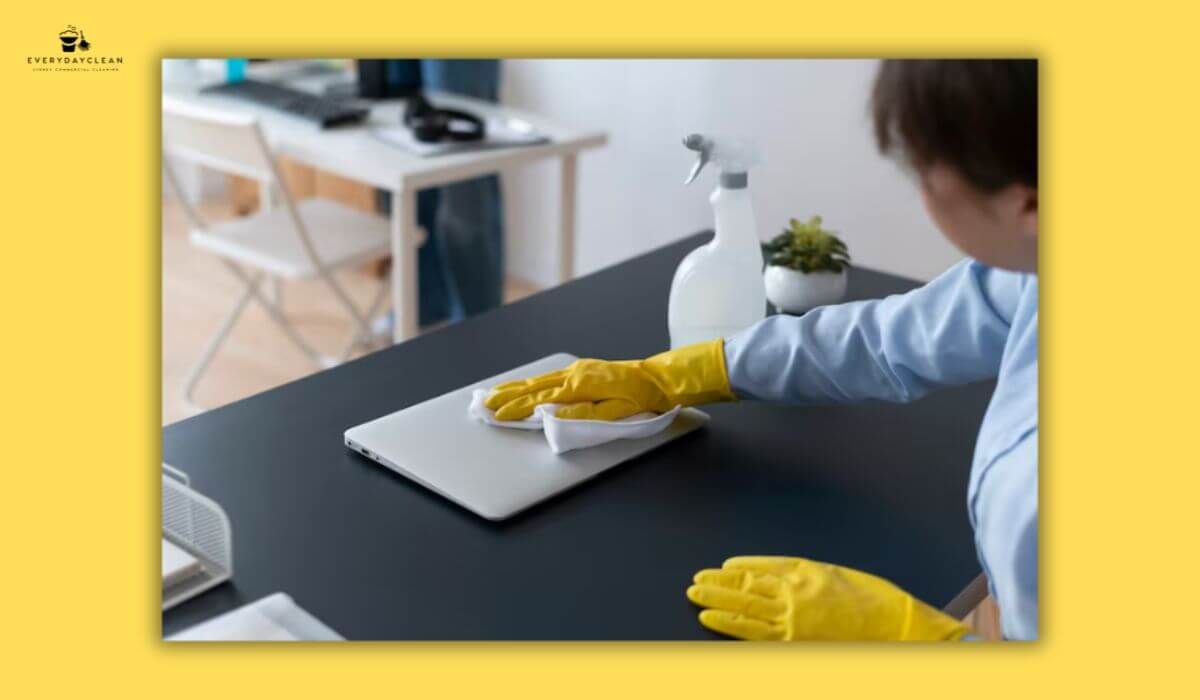
FAQs: Office Clutter Cleaning Tips Based on Real User Queries
Below are high-intent questions drawn from real-world query patterns for “office clutter reduction cleaning tips.” Each one dives deeper into specific user needs, from filing systems to ADHD-friendly cleaning approaches.
What to throw away when decluttering an office?
When decluttering, discard items that are broken, outdated, or no longer useful for your daily tasks. Common examples include dried-up markers, duplicate documents, expired business cards, broken office accessories, tangled cables, and old promotional merchandise. Create a discard bin specifically for these non-functional items and review them weekly to avoid clutter returning.
How to organise office paperwork during cleaning?
Start by gathering all paper from desks, inboxes, and cabinets. Sort into categories: “To File,” “To Action,” “To Shred.” Invest in vertical file holders or a simple filing cabinet with colour-coded labels. Wipe down shelves and drawer interiors before placing anything back. Make this paper-cleaning cycle part of your weekly cleaning process.
Best storage solutions for a small office?
In tight office spaces, vertical storage is key. Use wall-mounted shelves, magnetic whiteboards with organiser clips, under-desk cabinets, and stackable bins. Label each section and clean surrounding dust-prone areas weekly. Mobile drawer units also help avoid visual mess in high-traffic zones like shared desks or printer corners.
How to maintain a clutter-free desk long-term?
The most reliable method is integrating desk cleaning into your end-of-day routine. Clear papers, wipe the surface, and return items to labelled containers. Keep only 3–5 essential items on the desk at any time. Clean keyboard, mouse, and screen weekly to reduce hidden clutter buildup.
Clutter reduction tips for busy professionals?
Busy offices benefit from low-effort systems. Use desk organisers with built-in trays, automated reminders for cleaning, and hire commercial cleaners for weekly resets. Create shared rules: e.g., no paperwork left out overnight, and labelled bins for incoming/outgoing items. Consistency is what prevents daily buildup from turning into visual clutter.
Final Tip: Cleaning Beats Organising When It Comes to Clutter
While storage solutions help, the fastest path to reducing clutter is targeted, regular cleaning—especially in visible, high-traffic areas like entryways, shared desks, and kitchenettes. By focusing on physical removal, surface cleaning, and clear labelling, your workspace can maintain a clean, professional appearance without relying solely on deep organising systems.
Need help maintaining a clutter-free workspace?
Explore our professional
Office Cleaning services tailored for Sydney businesses. Everyday Clean delivers spotless, organised environments that support productivity and visual harmony.
Author: Everyday Clean Content Team
Everyday Clean is Sydney’s trusted provider of commercial cleaning solutions, including pools, gyms, offices, and strata properties. Our licensed professionals use advanced, eco-friendly equipment to deliver safe, compliant, and spotless results. With deep experience across Sydney’s hospitality, fitness, and residential sectors, we help facilities maintain inviting, healthy environments that guests trust.
